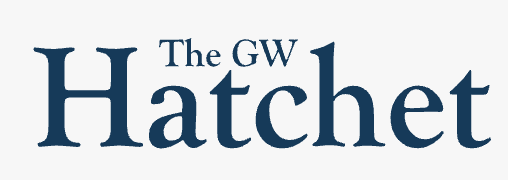The University’s strategic framework is intended to guide GW’s direction over the next five to seven years, serving as a road map of priorities and principles to inform decision-making. After officials suspended the previous strategic plan amid the COVID-19 pandemic and backlash over a controversial enrollment proposal, the community has waited five years for a new vision that reflects its evolving priorities. But the draft framework officials released last month offers little more than vague aspirations, lacking the clarity and specificity needed to assure community members that the framework will genuinely address their concerns and goals.
Criticism of former University President Thomas LeBlanc’s strategic planning efforts in 2019 and 2020 revealed a key takeaway: The community needs and wants clear, concrete information about how officials will carry out their goals in order to evaluate them meaningfully. In 2020, faculty senators raised concerns that LeBlanc’s interim reports outlined broad goals without explaining how officials intended to achieve them. The part of the plan that was specific — an embedded proposal to cut undergraduate enrollment by 20 percent while raising the proportion of STEM majors to 30 percent — sparked swift and widespread backlash. The specificity gave the community something tangible to reflect on, question and ultimately push against.
Vague language invites no meaningful critique. Clear proposals do. We need more of the latter to ensure the University’s strategic framework truly reflects the priorities of its community.
Officials unveiled the draft framework in April, centered around three “institutional priorities”: generating scholarship with impact, preparing students to be strong and resilient leaders and strengthening the University’s foundation for excellence. The framework stipulates that officials want to position GW as a “premier global convener of thought leaders,” emphasizing values like “intellectual diversity,” school spirit and a “vibrant and welcoming campus environment.” They’ve promised to “make strategic investments in faculty,” develop “impactful, high-visibility programs” and “nurture a lifelong community.”
On paper, the ideas in GW’s strategic framework are appealing. But without clear definitions, measurable outcomes or implementation strategies, they amount to little more than buzzwords.
To be fair, strategic frameworks are not expected to lay out every detail of implementation. They’re meant to be more flexible than traditional strategic plans, like the one pursued under LeBlanc’s leadership. GW’s strategic framework website highlights this distinction in a section titled “GW’s Strategic Framework vs. a Traditional Plan,” which outlines key differences between the two approaches. Unlike a “tactical” plan with a “checklist of items,” the framework is described as a more adaptive model, focused on a “visionary end state.” The site claims it “clearly defines the overarching priorities and goals” of the University, along with “methods for assessing progress.”
Still, flexibility shouldn’t come at the cost of clarity. LeBlanc’s strategic plan wasn’t heavy on specifics either, a point faculty criticized. But if nothing else, his enrollment strategy came with numbers. He said he wanted to “expand our commitment to STEM,” and he laid out how he planned to do it. That level of specificity gave the community something to understand, question and respond to.
Had LeBlanc simply said he hoped to grow STEM at the University without outlining how that goal would impact enrollment or financial planning, the community likely wouldn’t have pushed back so forcefully. Vague ambitions are harder to argue with. The same logic applies to the current strategic framework. Broad goals invite less scrutiny precisely because they reveal so little.
Take GW’s goal to create a “multiyear strategy” to meet the full demonstrated financial need of undergraduate students — arguably the most concrete aim in the entire plan. On the surface, it sounds great. But how does the University actually plan to achieve it? One approach could be allocating more institutional funds to supplement tuition for students receiving aid. But given that GW is not a need-blind institution, there’s another option: admitting fewer students who require financial assistance in the first place. Understanding the strategy behind the goal is essential to determining whether the community should support it. Without knowing the means, it’s impossible to judge the ends.
It’s encouraging to see University President Ellen Granberg prioritize community feedback in shaping GW’s strategic plan. Last year, officials held discussions with staff, faculty and students to gather input, culminating in an April 2024 report that highlighted key themes like capitalizing on GW’s location and strengthening alumni engagement. That commitment to dialogue has continued this semester, with officials hosting “community briefings” on the draft framework and accepting feedback through early May — an effort that, at least in theory, suggests community input is helping guide the plan’s direction.
Officials said they would review the feedback they collected through the start of May and present an updated draft to the Board of Trustees for review and approval, with plans to launch the final version in fall 2025. While it’s encouraging that they’ve created space for community input, it’s unclear how much meaningful feedback the community could realistically provide on such broad, high-level priorities and goals. When the details are this vague, there’s not much to respond to.
We hope the framework officials release includes more than aspirational language. Specifics create space for real engagement, debate and oversight. If this plan is meant to reflect the priorities of the GW community, it needs to say something concrete. Otherwise, there’s little to agree with and little to challenge.
The editorial board consists of Hatchet staff members and operates separately from the newsroom. This week’s staff editorial was written by Opinions Editor Andrea Mendoza-Melchor, based on discussions with Contributing Opinions Editor Madie Turley, Contributing Culture Editor Carly Cavanaugh, Sports Columnist Sydney Heise and Contributing Sports Editor Grant Pacernick.


